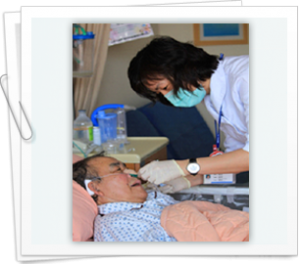Online CPR Certification Blog
Nasopharyngeal Cancer and what you should know about it
Date: June 26th, 2014
 Nasopharyngeal cancer is generally a cancer of the head and neck. This cancer usually starts at the upper area of the throat just behind the nose and this area is known as nasopharynx. It is placed precariously at the skull on its base just above the mouth roof. The nostrils usually open into nasopharynx. During breathing, the air flows via the nose into the nasopharynx and throat and eventually reaches the lungs.Nasopharyngeal cancer is alternatively known as nasopharyngeal carcinoma.
Nasopharyngeal cancer is generally a cancer of the head and neck. This cancer usually starts at the upper area of the throat just behind the nose and this area is known as nasopharynx. It is placed precariously at the skull on its base just above the mouth roof. The nostrils usually open into nasopharynx. During breathing, the air flows via the nose into the nasopharynx and throat and eventually reaches the lungs.Nasopharyngeal cancer is alternatively known as nasopharyngeal carcinoma.
Causes and risk factors for nasopharyngeal cancer
Just like most other types of cancer, the main cause of nasopharyngeal cancer remains largely unknown but scientists have linked the cancer to Epstein Barr Virus- EBV. Even though it is common for people to get an EBV infection, just because you have EBV doesn’t always mean that you are a candidate for nasopharyngeal cancer. Most people in US who have been infected by the EBV virus don’t end up having long term problems because the immune system is usually very active in destroying the virus. However, it so happens that the virus’s DNA mix with nasopharynx cells. This change results in abnormal growth and division of the cells thus causing nasopharyngeal cancer even though it happens rarely.
People who eat diets that are rich in meat and salt cured fish are at a high risk of getting this cancer. This type of diet has been very common in Asia, especially China. Research has shown that chemicals found in these foods are responsible for causing more damage to the cells’ DNA.
Prevalence of nasopharyngeal cancer
According to American Cancer Society, about 7 in 1 million people are diagnosed with nasopharyngeal cancer in America. Southeast China has the highest number of cases associated with nasopharyngeal cancer as well as in North Africa and the Inuit populations of Canada and Alaska. The white people, African Americans and Hispanics are also vulnerable to nasopharyngeal cancer in US. Males carry a bigger risk of getting this cancer than women and people younger than 55 in general. Other risk factors for nasopharyngeal cancer include excessive alcohol drinking, smoking and working around a certain chemical known as formaldehyde.
Treatment options for nasopharyngeal cancer
First of all, signs of nasopharyngeal cancer include double or blurry vision, hoarseness and difficulty in speaking, frequent ear infections, numbness or face pain, loss of hearing, headache, nosebleeds, lump in nose or neck, sore throat and stuffy nose. Radiation therapy is one of the treatments used to cure nasopharyngeal cancer where the cancerous cells are killed using x-rays and are stopped from growing any further. The next alternative treatment is surgery, which aims at removing the cancerous cells and there by curing nasopharyngeal cancer. But since the tumor is located near the skull, this surgery can be quite difficult and nearby structures and the eye can suffer permanent damage.